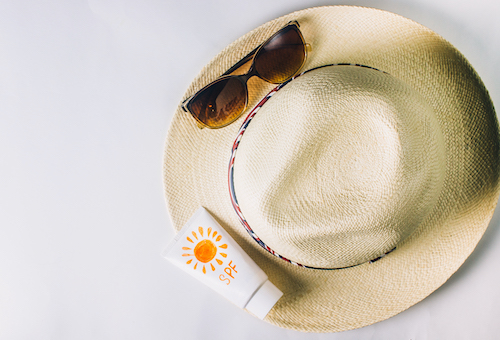New Brunswick, N.J., July 6, 2020 – Summer is here, and while we all want to enjoy the outdoors, it is important to take measures to protect our skin from exposure to ultraviolet (UV) rays that can increase the risk of developing sun-related skin cancer. The month of July is recognized as UV Safety Month as a reminder to practice sun protection during the summer months when UV rays are the strongest. By learning about the risk factors associated with skin cancer and how to protect yourself and your family, everyone can enjoy the season safely.

Skin Cancer Risk
According to the National Cancer Institute, skin cancer is the most common type of cancer. There are three common types of skin cancer: basal cell carcinoma, squamous cell carcinoma (both are known as non-melanoma skin cancers), and melanoma which is the deadliest of all skin cancers. Common risk factors for developing skin cancer include having blue, green or hazel eyes, many moles, history of severe sunburns, and a family history of skin cancer.
Plan Ahead for Outdoor Activity
By pre-planning and using a layered approach for sun protection consisting of shade, proper clothing, a hat, sunglasses and sunscreen, exposure and risk for skin cancer can be significantly reduced. It is best to avoid exposure to the sun when UV rays are strongest: 10am through 4pm. If you are planning to spend time outside during that period, consider covering up with long sleeves, pants and a wide-brimmed hat that covers your face. Apply sunscreen 30 minutes prior to sun exposure and reapply every two hours. If you are swimming or participating in physical activity that causes you to sweat, it is best to reapply more frequently. Sunscreen should have an SPF of at least 30, or as high as 50.
Early Detection and Screening
Skin cancers can often be found early, when treatment is most likely to be curative. Anyone can get skin cancer, so it is important to be on the lookout for signs. Most doctors will recommend scheduling regular dermatologic exams and examining your own body, especially if you are at a higher risk of developing skin cancer. When performing self-exams, use the ABCDE method for identifying suspect moles or spots on the skin: A=asymmetry, B=border - irregular; C=color – not uniform, D=diameter – greater than 6mm, E=evolving – change in size, shape or elevation. To learn more about early detection and screening, visit Skin Cancer and Early Detection Screening resource page.
Roman Groisberg, MD is a medical oncologist and director of the Sarcoma Program at Rutgers Cancer Institute of New Jersey with clinical expertise in melanoma, sarcoma, and clinical trials.
For journalists – contact:
Krista Didzbalis
Media Relations Assistant
908-812-6114
krista.didzbalis@rutgers.edu
For patient appointments/inquiries – contact:
844-CANCERNJ (844-226-2376)

